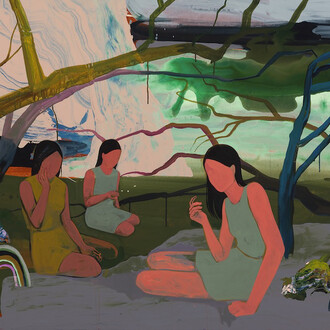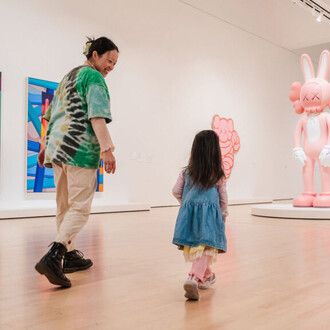Crown Point Press presents Only black and white, a group exhibition that explores the intricacies of black and white prints. Featuring a diverse group of artists, the exhibition highlights the significance of line, tone, and expression in the absence of color, inviting a deep engagement with form and contrast. The works showcase the artists’ ability to balance simplicity and complexity using only the monochrome palette, revealing profound depth and subtle nuance.
The works included in Only black and white range from abstract to figurative, geometric to organic. What ties them together is the artists’ choice to work exclusively in black and white. Several artists included in the exhibition often use bold color in their works. Choosing to use this monochromatic palette thus produces unique, powerful images that stray from the artists’ typical practice and invite contemplation and interpretation. Formal elements often point to what the artist intends with their work. Details like color, line, and composition generally inform the viewer’s understanding and interpretation of a work of art in one way or another. When the artist removes one of these elements – color, in this case – the viewer is left with one less hint, making the interpretation of the work less predetermined, more enigmatic, and, in many cases, more powerful.
Charline von Heyl, an artist typically known for her bold, colorful abstractions, departs from her usual style in Snoopy (Black V). Swirling, textured black lines make up the central form: an almost-recognizable anthropomorphic figure with a curled tail and a hat. The print is energetic, apparent in the short, quick lines by the beloved cartoon figure’s tail, snout, and hind leg. Soft ground etching produces these precise lines and crayon-like drawings found throughout the composition. This foundational single-plate etching served as the key plate for multiple additional prints that the artist created during her project in 2014. The figure on its own, coupled with the energetic lines, evokes a sense of nostalgia while challenging the viewer to reconsider the boundaries of abstraction and representation.
In Al Held’s Straits of Malacca II, line is used differently. The print is entirely geometric; its composition is filled with straight, precise lines and perfect circles. Large rigid structures are intertwined across the image, connected across deep and shallow space in a way that defies reality. Value, texture, and form emerge from precise crosshatching, creating a complex and grand image. This meticulous arrangement of geometric forms not only showcases Held's technical prowess but also invites viewers to explore the tension between order and chaos, prompting reflection on the interplay of structure and perception in a two-dimensional space.
In contrast to Held’s geometry, Fred Wilson’s We are all in the gutter but some of us are looking at the stars presents soft orbs of black against stark white paper to create a softer, more organic image. White paper peeks through a sea of black, etched droplets, a motif the artist consistently uses in his work to represent African Americans. Its abstract form, however, encourages viewers to reflect on their own perceptions of Mary Heilmann, Rain Reverse beauty, light, and darkness. Following his time at Crown Point Press in 2004, Wilson reflected on his etchings: “In my work, I’m usually pretty sure of what’s going to come out. I usually think I know what people will see. But in this case, I just did it. It’s exciting and scary. I have no idea what others will see in it, or how they will relate it to my work.” This openness to interpretation showcases Wilson's artistic exploration while highlighting the transformative power of art to elicit diverse responses.
Only black and white is a compelling exploration of the artistic potential inherent in the absence of color, challenging viewers to focus on the subtleties of form, line, and texture. The exhibition emphasizes an ongoing dialogue about perception, beauty, and expression. Other artists featured in Only black and white are Bruce Conner, John Chiara, Richard Diebenkorn, Leonardo Drew, Mary Heilmann, Jacqueline Humphries, Anish Kapoor, Sol LeWitt, Brice Marden, Tom Marioni, David Nash, Ed Ruscha, Pat Steir, Wayne Thiebaud, Mary Weatherford, William T. Wiley, and John Zurier.
















